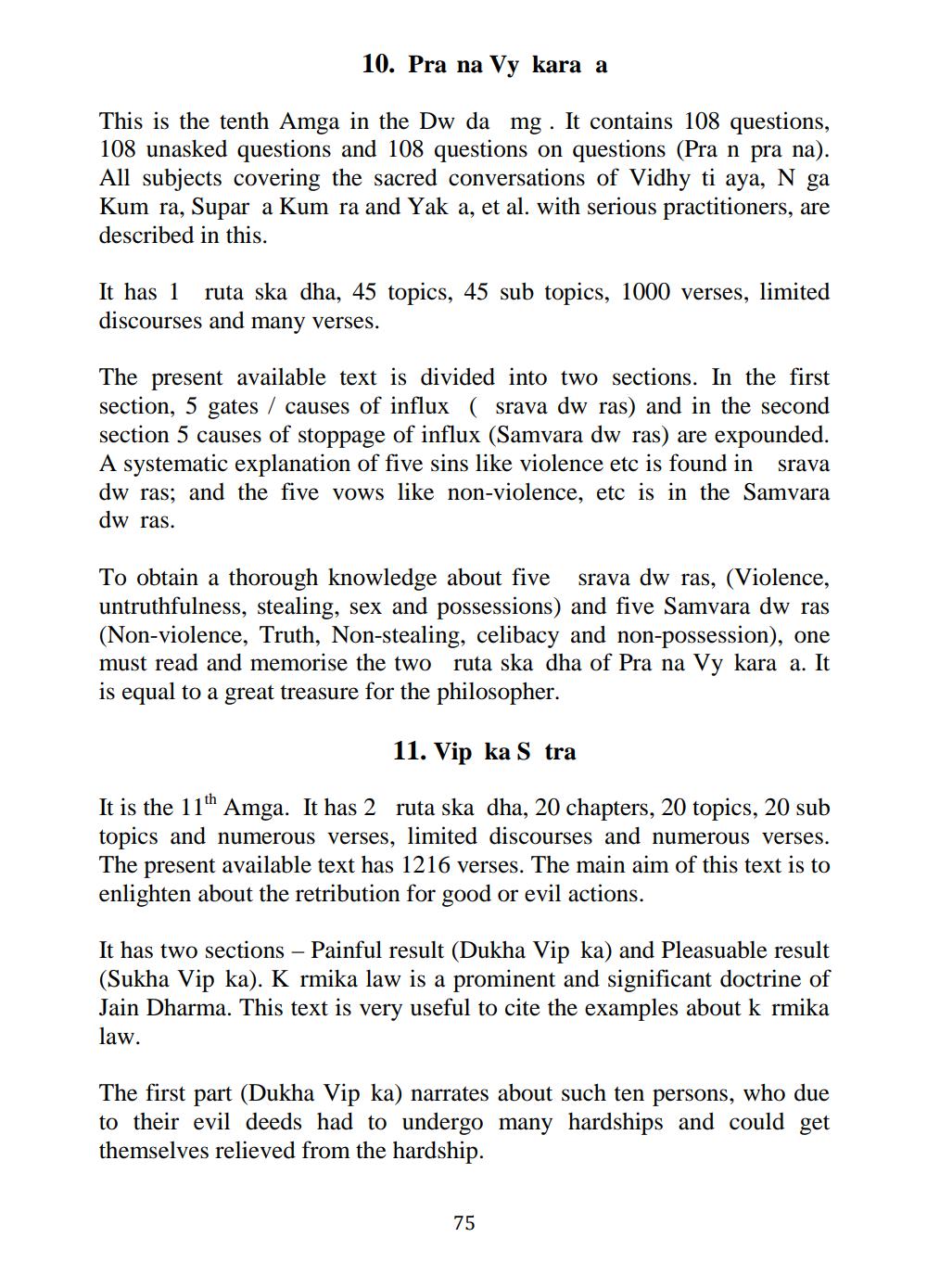________________
10. Pra na Vy kara a
This is the tenth Amga in the Dw da mg. It contains 108 questions, 108 unasked questions and 108 questions on questions (Pra n pra na). All subjects covering the sacred conversations of Vidhy ti aya, N ga Kum ra, Supar a Kum ra and Yak a, et al. with serious practitioners, are described in this.
It has 1 ruta ska dha, 45 topics, 45 sub topics, 1000 verses, limited discourses and many verses.
The present available text is divided into two sections. In the first section, 5 gates / causes of influx ( srava dw ras) and in the second section 5 causes of stoppage of influx (Samvara dw ras) are expounded. A systematic explanation of five sins like violence etc is found in srava dw ras; and the five vows like non-violence, etc is in the Samvara dw ras.
To obtain a thorough knowledge about five srava dw ras, (Violence, untruthfulness, stealing, sex and possessions and five Samvara dw ras (Non-violence, Truth, Non-stealing, celibacy and non-possession), one must read and memorise the two ruta ska dha of Pra na Vy kara a. It is equal to a great treasure for the philosopher.
11. Vip ka S tra
It is the 11th Amga. It has 2 ruta ska dha, 20 chapters, 20 topics, 20 sub topics and numerous verses, limited discourses and numerous verses. The present available text has 1216 verses. The main aim of this text is to enlighten about the retribution for good or evil actions.
It has two sections - Painful result (Dukha Vip ka) and Pleasuable result (Sukha Vip ka). K rmika law is a prominent and significant doctrine of Jain Dharma. This text is very useful to cite the examples about k rmika law.
The first part (Dukha Vip ka) narrates about such ten persons, who due to their evil deeds had to undergo many hardships and could get themselves relieved from the hardship.
75




